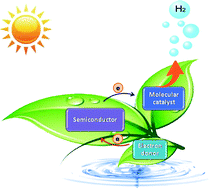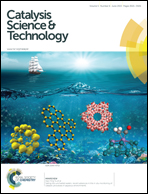Hydrogen photogeneration from water on the biomimetic hybrid artificial photocatalytic systems of semiconductors and earth-abundant metal complexes: progress and challenges
Abstract
The replacement of traditional non-renewable fossil fuels by sustainable energy sources is one of the most challenging problems that must be solved in the 21st century. In this context, the conversion of solar energy into stored chemical energy, especially the solar-driven splitting of water into molecular H2 and O2, has emerged as an attractive technology to solve the global energy issue. Inspired, but not constrained, by natural photosynthesis, a number of artificial systems and devices have been developed to harvest sunlight, oxidise water and reduce protons to produce useful solar fuels. This perspective reviews the recent significant developments in the field of hybrid artificial photocatalytic systems containing semiconductors as the photosensitizer, and organometallic complexes made of earth-abundant elements (Fe, Co, Ni) as the molecular catalyst, for the photogeneration of H2 from water. A brief introduction to artificial photosynthesis and water reduction is first given, followed by an explanation of the basic principles and mechanism involved in artificial solar-driven water splitting for H2 generation. Different series of hybrid artificial photocatalytic systems based on semiconductor photosensitizers and molecular catalysts that can be applied in the photogeneration of H2 from water are discussed in detail. Finally, the future perspectives of this research field are also discussed.


 Please wait while we load your content...
Please wait while we load your content...